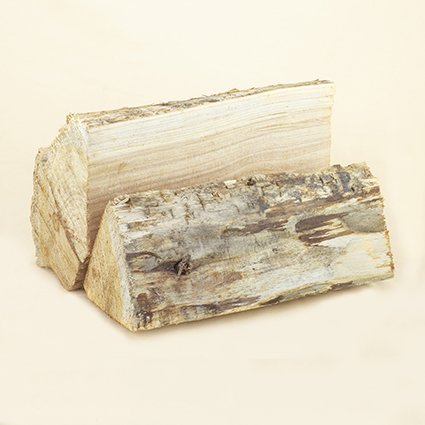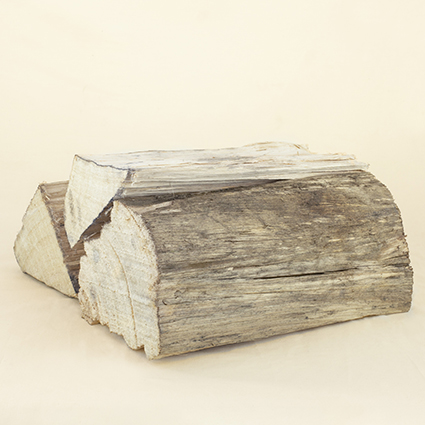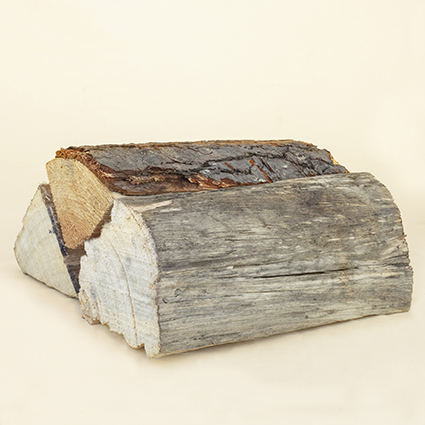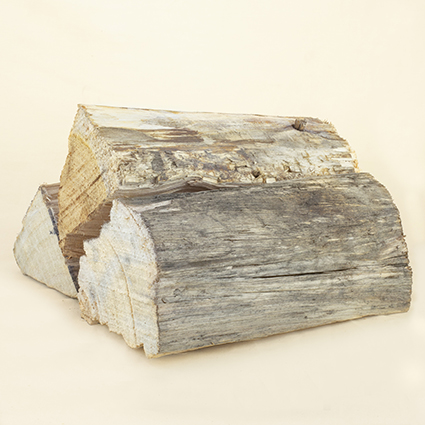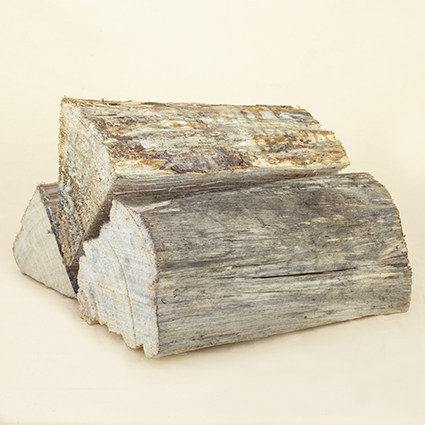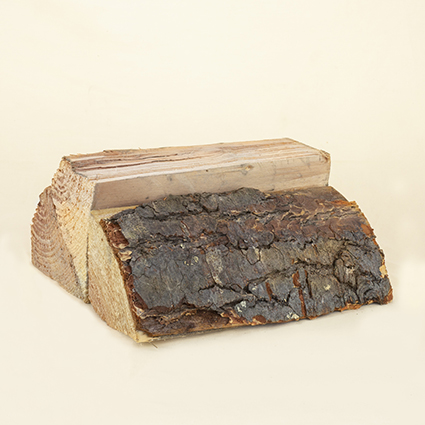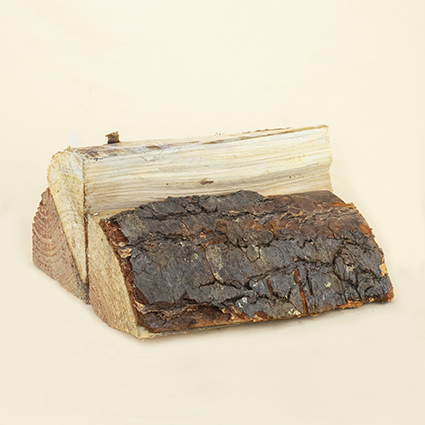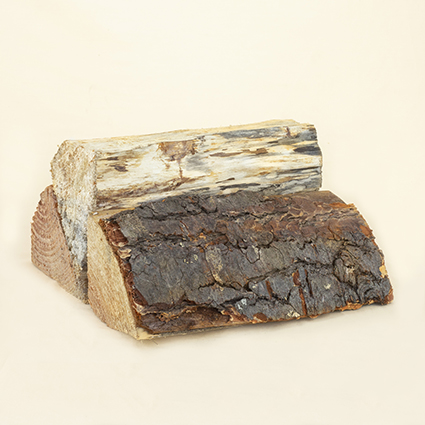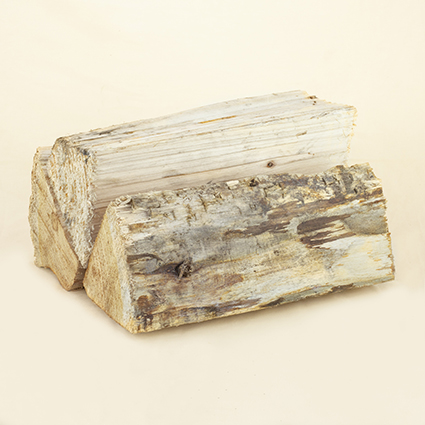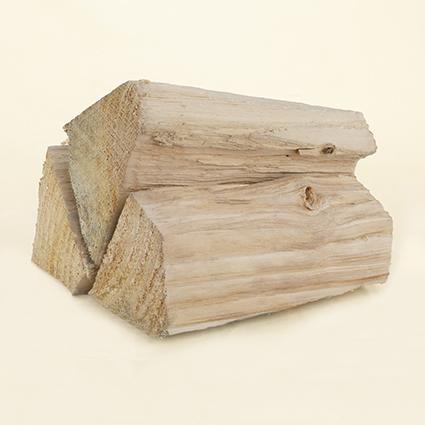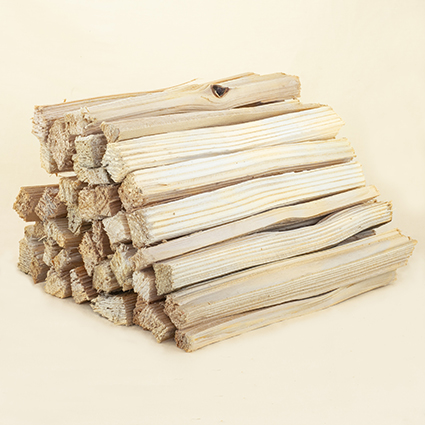
Seasoned wood is good
Do you want smoke or fire? We season our wood so by the time it reaches your fireplace, it’s ready to burn brilliantly.
Great things take time, here at WFS we patiently wait while the sap dries out of our logs ready for selection. Depending on the type of wood this can take between 12months -24months to achieve. Green or unseasoned wood is hard to ignite, smoulders, burns poorly and doesn’t produce heat. The process of seasoning allows moisture to evaporate from wood, yielding firewood that burns safely, efficiently and importantly fit for the flame.
Different wood, different burning
Gum & Manuka
Hardwoods, long burning time with maximum heat output. Both are clean burning.
Gum can be difficult to start a fire. The easiest way to identify gum is to look at the end, it is smooth and often has cracks this happens during the seasoning process. Even though Gum is a hardwood it will absorb rain, this will usually dry after a couple of weeks if stored correctly.
Douglas-Fir & Macrocarpa
Medium woods, good heat output and reasonably long burning, easier to start fire with. Very clean burning woods. Identify both woods by looking at the end of the wood, they should be rippled, a bit like orange peel.
Douglas-Fir has the unique ability to shed water, this makes it suitable for purchase and burning during long periods of rain.
NB: It is important to note that macrocarpa is not suited to open fires as it has a tendency to spark a lot.
Split Pine
Softwood. Good heat output. Easy to start fire. Will generally burn faster than hard woods. Suited to both open fires and log burners. Split pine may absorb the rain readily due to its soft nature, consider this characteristic when purchasing during the winter. Split Pine can be susceptible to mould that grows on the surface of the wood utilising sugars and other carbohydrates. It gives the wood a woolly or powdery appearance, but does not affect the firewood. The end of the pine is rippled, a bit like orange peel.
NB: We don’t recommend burning Old Man Pine, it is a very dirty firewood to burn, soot’s up the chimney very quickly and is very bad for the environment.
Our recommendation when burning firewood is to select a combination of wood. A soft wood to start the fire and get a good hot base, then a hard wood to slow down the burning time and have maximum heat output. Our most popular option is a combination of Gum and Split Pine.
When purchasing Gum and Split Pine/Douglas-Fir/Macrocarpa after periods of rain
For a couple of weeks you will have to be selective of the pieces you burn. You can usually tell the pieces that haven’t absorbed as much moisture as others. Pine is like a sponge it absorbs moisture right to the core. Even though Gum is a hardwood it will also absorb rain.
Please ensure you start the fire with the Split Pine/Douglas-Fir/Macrocarpa, select pieces that are light in colour and haven’t absorbed as much moisture. Don’t try and start the fire with gum. The easiest way to tell the difference is by the end of the wood. The gum is smooth, some pieces have cracks, this shows the gum is seasoned, Split Pine/Douglas-Fir/Macrocarpa, have a rough rippled end a bit like orange peel.
Start the fire with the Split Pine/Douglas-Fir/Macrocarpa, establish a good hot fire. Don’t put any gum on until you have the fire burning really well. Put one piece of gum on the fire, keep adding Split Pine/Douglas-Fir/Macrocarpa, around the gum, once the gum is burning well and starting to glow you can then start to add another piece always adding Split Pine/Douglas-Fir/Macrocarpa as well.
Popular Firewood
Less Mess
Most firewood suppliers scoop the wood into trucks for delivery, which means you get a lot of “other bits” on your land that you have to clean up. Because our delivery trucks are loaded by a conveyor system, we eliminate as much mess as possible.
Measures
We deliver in lots of 2 or 4 cubic metres, this is what we call a “thrown measure” (ie. the wood is thrown in the truck, not stacked). For those of the old school, 1 cord is equivalent to 3.6m3.
Extract from Consumer NZ
Firewood is sold as a “thrown measure” unless specifically stated otherwise. This means that the quantity of wood is measured as if it was thrown into a container, and not as if it was stacked. Stacking it will reduce the volume by about 1/3 (3 cubic metres of thrown wood is roughly equivalent to 2 cubic metres stacked).
More from Consumer NZ – Firewood
Certificate of Approval
Our delivery trucks are all Certified under the Weights and Measures Regulation 1999. They have a certificate of approval for firewood volume measure. Issued by, The Ministry of Business Innovation & Employment, Wellington.

Storing your firewood
Store firewood in a well ventilated, covered location. A wood-shed with an open side is best. If you don’t have a woodshed, try storing it out in the open with a plastic cover or corrugated iron. Leave the sides open so the wood can breathe.
It’s a good idea to store firewood off the ground, on a pallet, layer of bricks, stone or plastic sheet to prevent moisture from being drawn up into the woodpile. Wood stored in a criss-cross pattern allows for greater air circulation.

